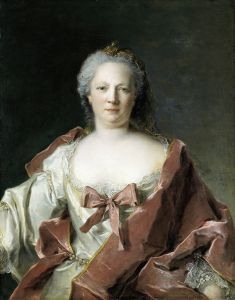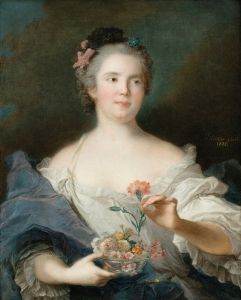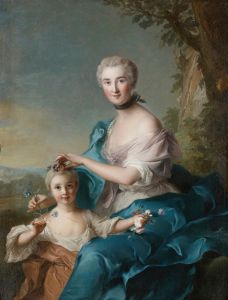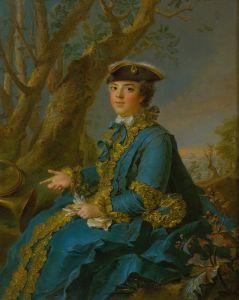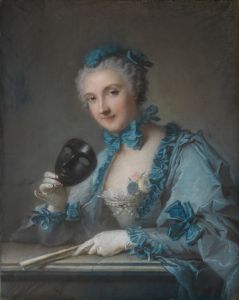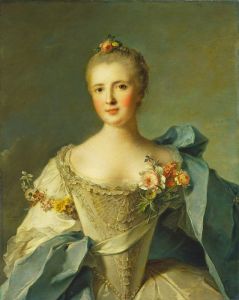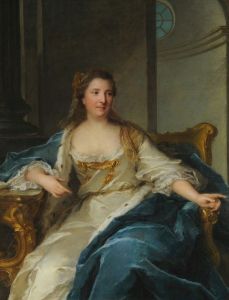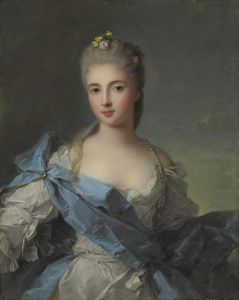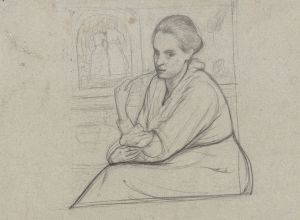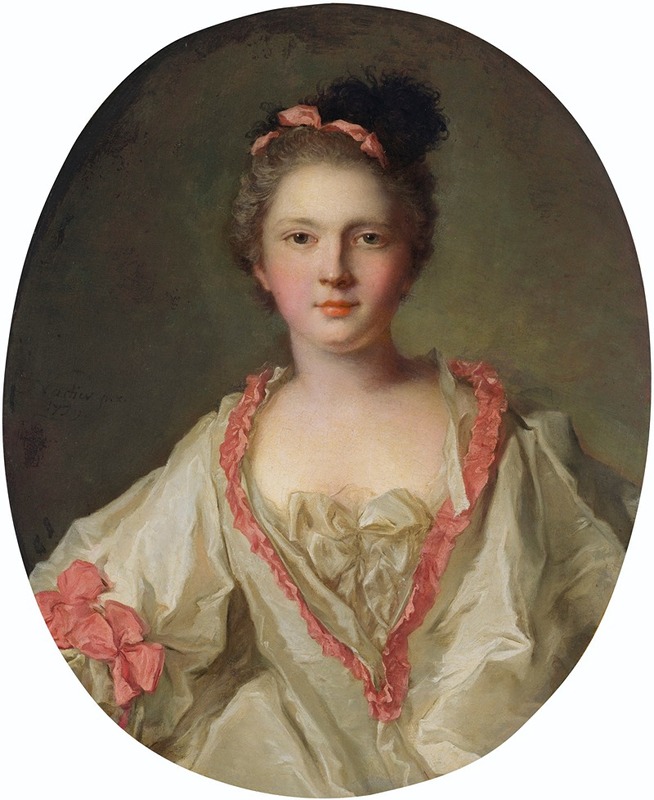
Portrait of Marie-Thérèse Geoffrin , Marquise de la Ferté-Imbault
A hand-painted replica of Jean-Marc Nattier’s masterpiece Portrait of Marie-Thérèse Geoffrin , Marquise de la Ferté-Imbault, meticulously crafted by professional artists to capture the true essence of the original. Each piece is created with museum-quality canvas and rare mineral pigments, carefully painted by experienced artists with delicate brushstrokes and rich, layered colors to perfectly recreate the texture of the original artwork. Unlike machine-printed reproductions, this hand-painted version brings the painting to life, infused with the artist’s emotions and skill in every stroke. Whether for personal collection or home decoration, it instantly elevates the artistic atmosphere of any space.
Jean-Marc Nattier, a prominent French Rococo painter, is known for his portraits of the French aristocracy during the 18th century. One of his works, Portrait of Marie-Thérèse Geoffrin, Marquise de la Ferté-Imbault, depicts Marie-Thérèse Geoffrin, the daughter of the famous salonnière Marie Thérèse Rodet Geoffrin. The painting is a fine example of Nattier's skill in combining elegance, idealization, and a sense of intimacy in his portraits.
Marie-Thérèse Geoffrin, Marquise de la Ferté-Imbault, was a notable figure in her own right. Born in 1715, she was the only daughter of Marie Thérèse Rodet Geoffrin and Pierre François Geoffrin. Her mother, a central figure of the Enlightenment, hosted one of the most influential salons in Paris, frequented by philosophers, writers, and artists. While Marie-Thérèse Geoffrin did not achieve the same level of fame as her mother, she was known for her wit and intellect, as well as her marriage to the Marquis de la Ferté-Imbault.
The portrait by Nattier captures the Marquise in a graceful and refined pose, characteristic of his style. Nattier often portrayed his sitters in allegorical or mythological guises, but this particular work appears to focus on her as a person of status and sophistication. The painting showcases Nattier's mastery of texture, particularly in the rendering of luxurious fabrics and delicate skin tones. His use of soft, diffused lighting enhances the subject's features, giving her an almost ethereal quality.
As with many of Nattier's works, the portrait reflects the Rococo aesthetic, emphasizing elegance, charm, and a sense of lightness. The Marquise's attire and surroundings likely reflect her social standing and the fashion of the time, though specific details about the symbolism or setting in this painting are not widely documented.
The exact date of the painting is not definitively recorded, but it would have been created during Nattier's peak period of activity, likely in the mid-18th century. The current location of the painting is also not widely known, as it does not appear to be part of a major public collection.
This portrait stands as a testament to Nattier's ability to immortalize the French elite of his time, offering a glimpse into the lives and personalities of his subjects. However, detailed information about the painting's provenance or its specific historical context remains limited.







